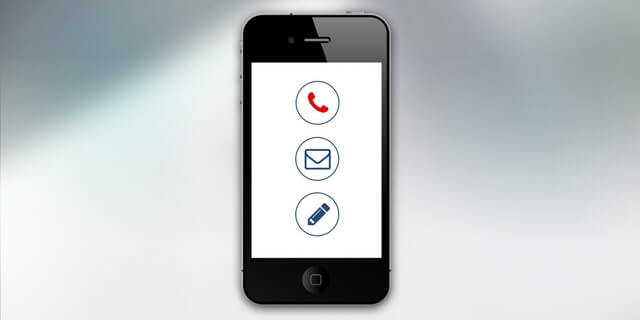Online shopping, it is fun, convenient and…dangerous? Nowadays prowlers lurk around every corner on the web trying to get your personal information, credit card numbers and more. Identity theft and fraud are some of the biggest cyber issues facing users today and one of the easiest and most frequent ways is through online shopping. Protect yourself and your purchases to have the best online shopping experience by checking out Promocodes.com 10 red flags and tips for data protection when making online purchases!

1. Phishing
Ever get those annoying emails posing as your bank or a creditor asking for personal finance information, so you can get “low-interest rate personal loans” or “the best credit card?” That is “phishing”, fraudulent emails trying to get passwords, credit card numbers and personal information so they can maliciously use your information on the internet. Often in disguise as a “trustworthy” financial institution and hiding behind electronic communication, it is hard to tell the difference.
Some emails are so well designed they look exactly like that of your bank. However, there are some subtle differences to these electronic emails so a good rule of thumb, if you weren’t expecting an email from your bank or financial institution, it probably wasn’t them. With the growth of online banking, it is hard to tell sometimes but your bank won’t ask for sensitive information over email.
If you are unsure, contact your financial institution to ensure it didn’t come from them, but do not click any links with the email until you are sure. Then simply delete and mark as spam.

2. Text message scams
Phone scammers have gotten better and better. From phone calls from numbers that look almost identical to yours to the new age of telemarketing that tries to get your personal information. Now, text messaging is something to be aware of.
If you get a text from an unknown number, particularly that of a short 5 or 6-digit number, do not respond. A lot of companies use text message alerts from rideshare apps to online banking and even your pharmacy. But if you do not recognize the alert or know exactly who it is from and what it is about, delete the text and block the number. Responding can open you and your phone up to hacking and identity theft. There is now a term for such a thing, “smishing.” Unfortunately, it is working far too often so efforts have only grown, so protect your phone and your identity and only respond to numbers you know!

3. Typosquatting
Do you type the URL perfectly every single time? We didn’t think so. Hardly anyone does, and scammers know it and use it for their benefit for something referred to as “typosquatting” or hijacking. This fake site has the URL and domain name of other brands but, with an error, the same common errors most people make when typing the brand or URL into their browser. They capitalize on a user’s mistake and fool them into thinking they are, in fact, on the right site.
These sites can be one character off and get plenty of internet surfers to visit. Most of these sites loosely fall into a category of cybercrime and are not to be trusted. Most have been associated with some of these other red flags like spam, phishing, and fraud. So be aware and bookmark your most frequented sites with the correct URL so you don’t end up where you don’t want to go.

4. Free Wi-Fi
Here at Promocodes.com we love freebies and discounts, but even we draw the line. When in public or out and about it is easy to want to jump on any Wi-Fi network that offers a free and easy connection, so you don’t have to use up that data. Not every network is trustworthy. It is one thing to hook up to your local coffee shop that gives customers the password, but it is another to go on a completely unsecured network for free that you found on your phone.
These free Wi-Fi networks open your phone to a mess of hazards like hacking, identity theft and more. For most, the cell phone holds a lot of personal and sensitive information, so connecting to an untrusted Wi-Fi networks makes it easier for unknown people to get your information off your phone and commit fraud.
.jpeg)
5. Online shopping scams during holidays
Unfortunately, many sites take advantage of the holiday season with false claims on huge savings. Here at Promocodes.com we take holiday shopping and online savings very seriously, so we want to protect our shopper from scams like this. Fake websites are created to sell you something directly at a “deeply discounted” price rather than through trusted and vetted sites like Amazon and eBay. Or they fashion themselves to look like brands and merchants you trust.
Remember, most e-commerce sites guarantee an online transaction so be aware of these other red flags and ensure it is a legit site before typing away that credit card number. And remember, if you really want great deals and savings over the holidays head to Promocodes.com to find Black Friday discounts and Cyber Monday coupons to save.

6. Look-alike sites
Similar to that of “typosquatting” look-alike sites bank on you recognizing the key brand elements of the sites you love, without looking too closely. If it remotely looks like the shopping site you love via fonts, color scheme, and branding, it can fool a user. These look-alike sites use similar domain names and URLs to the site you may be looking for. This is also done with those phishing emails we told you about. It is best to keep your eyes peeled and pay attention to the smaller details when shopping online, you don’t want to trust the wrong site and end up with fraudulent charges.

7. Trust seal
Is that site missing a trust seal? Don’t know what a trust seal is? You have probably been ignoring in the past, but it is a simple little way to know if the site is trustworthy or not. Trust Seals mean the site has been verified and there is a secure transmission for customers, i.e. your credit card and personal information is safe when you make a transaction online. When shopping online it is important to find these different seals to know it is a place you can trust when making a purchase. Google has a trust seal and many companies provide their expertise and insight to give trust seals to e-commerce sites and online stores.
Entrust Datacard provides security for these transaction for retail sites to ensure authentic purchases and monitoring fraud. They can provide SSL certificates to retailers and have their own trust seal with real-time status check. Companies can easily get protection for themselves and their customers through Entrust Datacard to ensure and protect online transactions and get 20% off domestic price on a standard SSL which is nothing compared to the thousands they will save you, the customer.
.jpeg)
8. Contact information
Can’t find the sites contact information? Customer service number or email? That is a red flag! When it comes to retail and e-commerce sites, they should always give you the ability to get in contact with them, whether it is about shipping, a return or issue with your purchase. If you can’t find a way to contact the company via email or over the phone that is an issue.
Another thing to look out for is an email or number that isn’t valid. Have a bad feeling or shopping at a site you are unfamiliar with? Test it! Email the company or try the customer service number to see if it works properly and you get a response from the actual company.

9. Outdated, difficult to navigate sites
We are in 2018, don’t shop at a site that looks like it is from 1995. If the site is difficult to navigate and you can’t find your way around or if it simply looks like your computer time traveled to windows circa ’98 that is a red flag.
Retail and e-commerce sites keep their site design and user experience up to date. They want customers having a good user experience to return and make purchase after purchase. Fraudulent sites only need you to make that one purchase to get all your personal information. Do the common-sense thing and shop in the present and browse the site, the usability and note the design. If it is blatantly old-school, slow, sloppy and just downright unappealing, something might be up.
.jpeg)
10. Gut feeling
In the end, trust your gut. If you have a bad feeling about the site or the transaction, don’t make it! Your gut instincts say a lot about your online shopping habits and rather than “going for it” and regretting it later with a stolen identity and fraudulent purchases on your card, just exit the browser and find another trusted site.